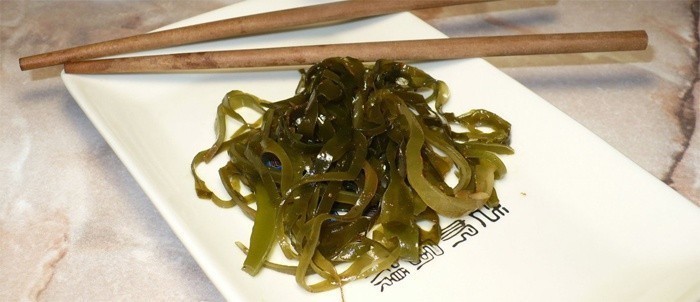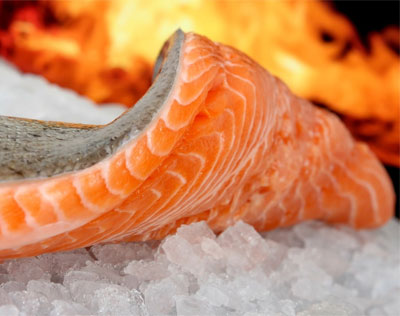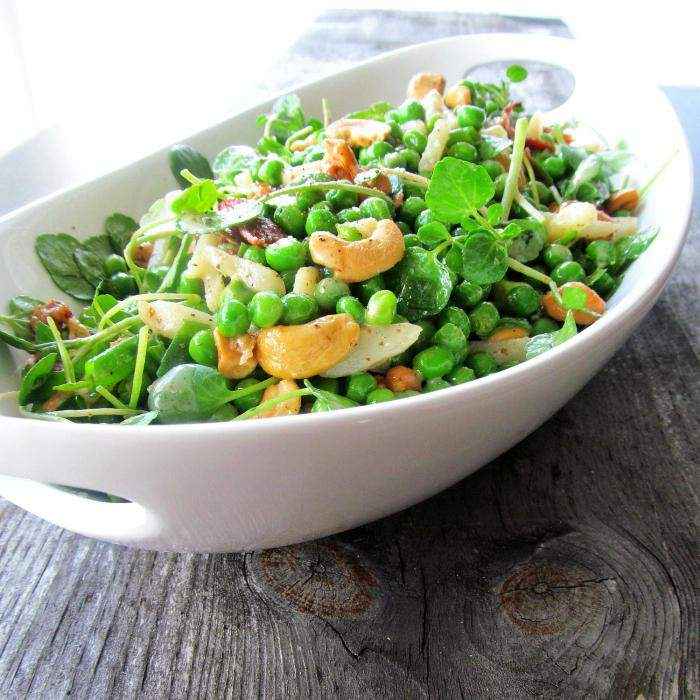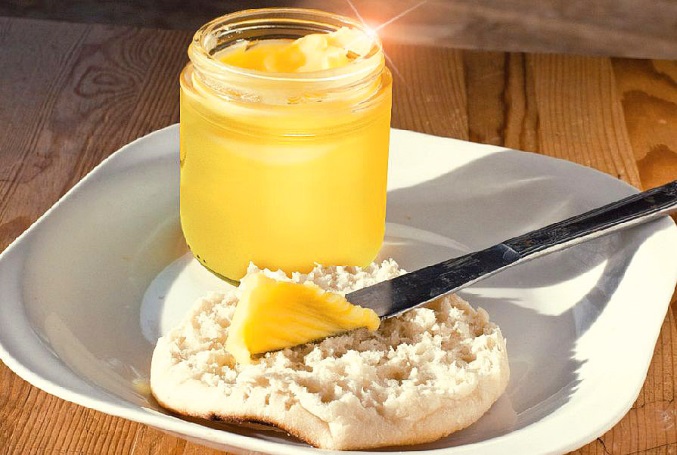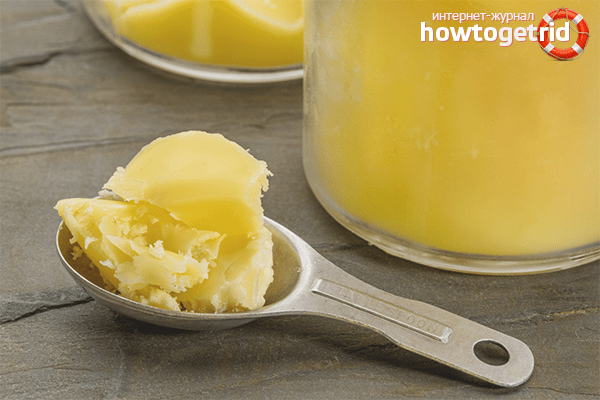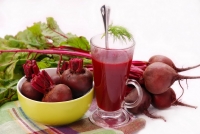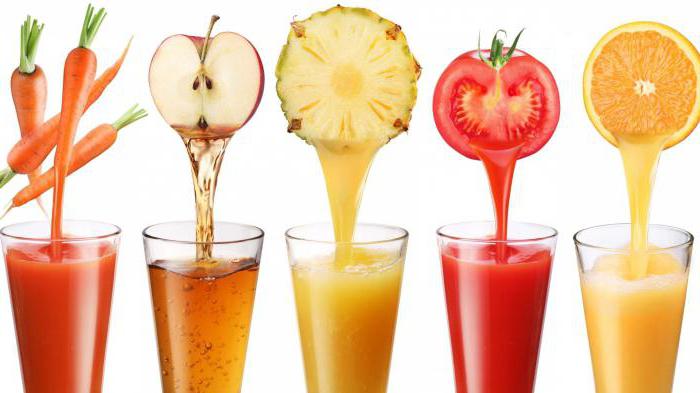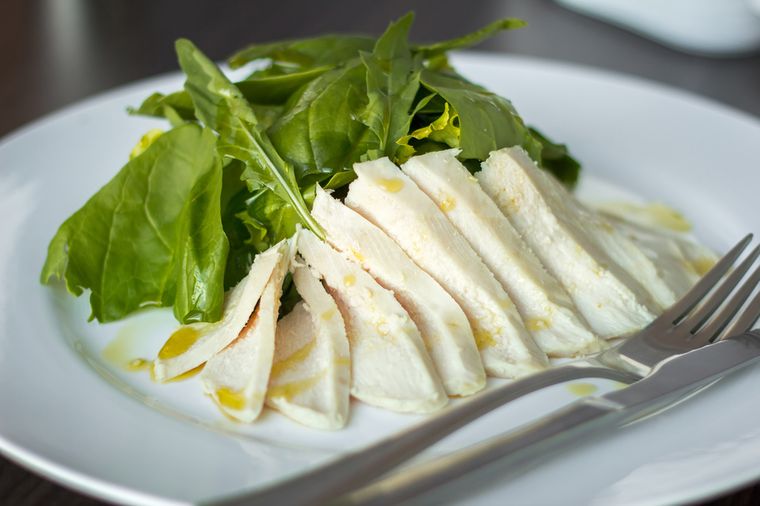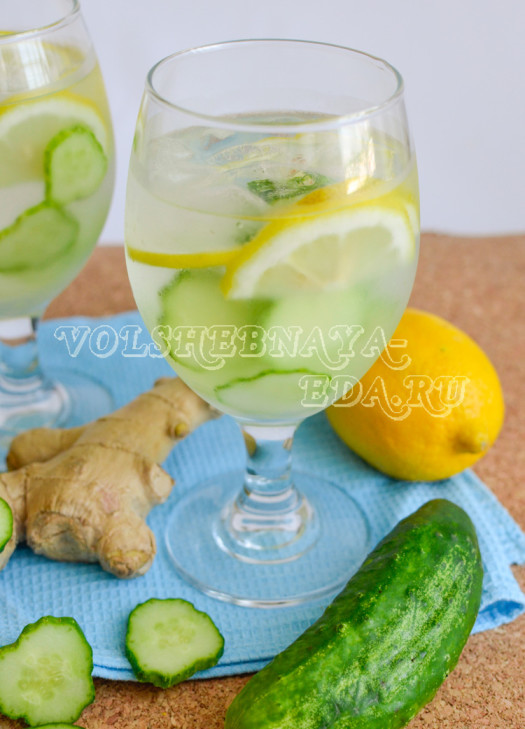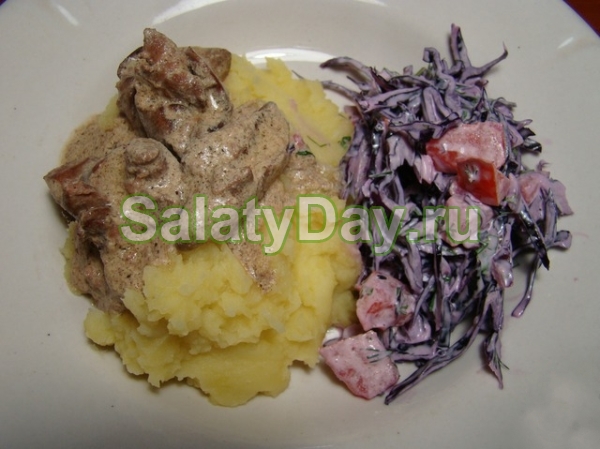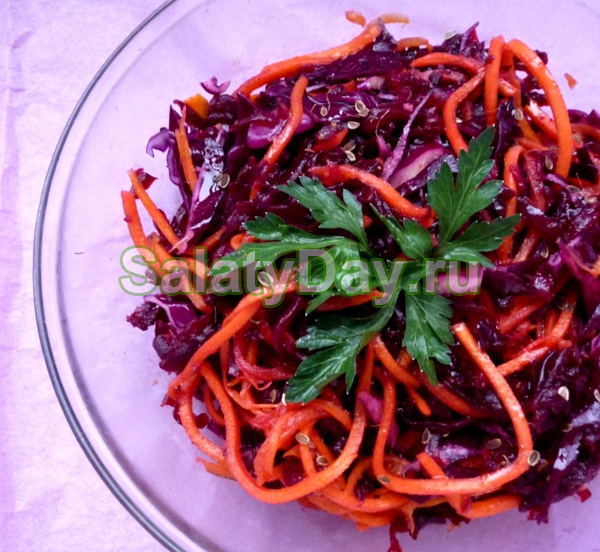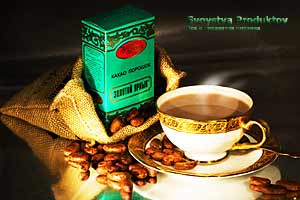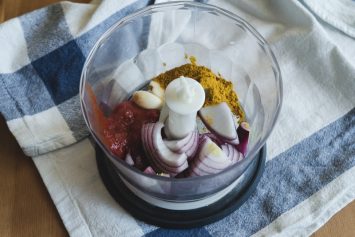What does vegetable ghee mean (see photo and explanation)
Ghee is a mixed product. On the one hand, it is difficult to overestimate its excellent taste, its benefits for health promotion and the possibility of widespread use in cosmetology. On the other hand, oil is primarily fat, and fats, due to the craze for a healthy lifestyle, are practically anathema. Therefore, we will consider the benefits and harms of using ghee, find out that “scary” cholesterol is actually not so scary, and we’ll learn some new beauty recipes.
Ghee: “good” or “bad” fat?
In simple terms, ghee is butter from which milk proteins, water and lactose have been removed. As a result, high-calorie cream becomes even more high-calorie product, because according to GOST 100 grams of ghee must have at least 99 grams of milk fat, which, in turn, consists of at least 35% unsaturated fatty acids. What does this mean?
According to a common misconception, the best “fuel” for the human brain is carbohydrates. However, it is worth remembering that more than two-thirds of the brain consists of fats, most of which are unsaturated fatty acids and omega-3 fatty acids. Therefore, for the full and productive work of the brain, fats are simply necessary. Unfortunately, supporters of various “fat-free” diets often forget about this.
This, of course, does not mean that you need to thoughtlessly absorb oil, lard and other high-calorie "bombs", because fats are different for fats. Without going into details, the composition of fats is divided into two large groups - consisting of saturated (conditionally "bad") and unsaturated ("good") fatty acids. As you might guess, it is the unsaturated fatty acids that benefit. By the way, these include omega-3 and omega-6 fatty acids, which everyone who has heard a little interested in healthy nutrition has heard about.
It is the higher content of unsaturated fatty acids that makes ghee different from other fats of animal origin. Linoleic acid (omega-6) in its composition provides the growth and development of cells and tissues of the human body and is involved in the synthesis of sex hormones. In addition, ghee is rich in various trace elements - in particular, calcium, iron, magnesium, phosphorus, potassium, and vitamins A, D, PP, E.
Linoleic acid, like other polyunsaturated (irreplaceable) fatty acids, is not able to be synthesized during metabolism and must be ingested with food. Thanks to it, fat metabolism is normalized, dry skin is reduced, and cell membranes are maintained in a normal state. A lack of linoleic acid in the body leads to eczema and hair loss.
However, in addition to useful vitamins and minerals, ghee includes trans fats and cholesterol, and the energy value is at least 890 kcal per 100 grams of product. Moreover, the cholesterol in this product is 25% more than in cream. In addition, there are almost two times more “bad” saturated fatty acids in it than “good” unsaturated ones. Saturated fatty acids lower the body's sensitivity to cholesterol, as a result of which it is retained in the bloodstream, therefore, the risk of deposition of cholesterol on the walls of blood vessels increases. But saturated fatty acids also have a positive quality: they give our body energy.
Useful properties of ghee
The benefits of consuming the product are beyond doubt, because, as mentioned above, it contains the unsaturated fatty acids our body needs.
Table: ghee chemical composition
The aforementioned product, unlike its "brother", is more convenient in everyday life, especially in frying foods. Firstly, it does not burn, while anyone can burn, contributing to the release of free radicals. When frying, it does not foam, does not form carcinogens and, therefore, does not adversely affect the liver. Moreover, the product is a source of antioxidants, which, on the contrary, neutralize free radicals that somehow get into our body. Secondly, melon has a much longer shelf life compared to cream: it is safely stored for a year at room temperature, does not oxidize and does not rancid, so it can be taken on trips and trips.
According to the traditional system of Indian medicine, Ayurveda, ghee is a miracle cure that heals and rejuvenates the human body. It is called Ghee. The cooking technology is slightly different from what we know, and the result is a caramelized product with a light nutty flavor and aroma. From time immemorial, ghee in India was considered a sign of prosperity and was called "liquid gold." Ayurveda says that the medical benefits of ghee are greater, the longer it "ripens", and a century-old ghee is considered an elixir of immortality.
However, much more often the product is used for medical and cosmetic purposes. One of its properties is the improvement of complexion and general condition of the skin. And this applies to both eating and making masks and compresses based on it.
Eating food regulates the metabolism and improves digestion, favorably affecting the functioning of the gastrointestinal tract. It also helps maintain the elasticity of blood vessels, preventing the occurrence of varicose veins, increases immunity. In addition, the use of ghee has a positive effect on intelligence: memory improves, cognitive abilities increase, the central nervous system is maintained in good shape.
Benefits for the female body
The use of ghee has a beneficial effect on the female body. This does not mean that it is contraindicated for men, it’s just more beneficial for women, and this is due to some physiological characteristics, because fatty acids are especially needed for those who have experienced problems of anemia and anemia, and these problems are considered to be genuinely “feminine”.
It is imperative to include ghee in your diet during pregnancy, especially in the first and second trimesters, when the future baby is actively developing and internal organs are formed, because the fetus receives all the necessary nutrients for normal formation and development exclusively from the mother. Since ghee is rich in calcium, its use helps the formation of a healthy skeletal system of the child. However, do not forget that this is a very high-calorie product, and you can not abuse it, this is fraught with weight gain.
Is it possible for children: “for” and “against”
Pediatricians are unanimous on the issue of using ghee (and butter) in children’s diets: the product should be, because the substances contained in it are easily broken down and absorbed by the body by 98%. Moreover, children need to eat it more than adults. The milk fats and vitamins that make up ghee are necessary for the child to grow and develop normally and fully: Vitamin A is responsible for color perception, B2 for hair growth, and it also ensures healthy skin and nails. In the winter season, there is an acute problem of a lack of vitamin D, which is mainly synthesized by the skin under the influence of ultraviolet rays and to a much lesser extent enters the body with food - including that found in oil. Adequate intake of vitamin D in the body avoids rickets and forms a healthy, strong skeleton. And, since the dish does not contain aggressive proteins of cow's milk and milk sugar, this product is recommended for children with lactose intolerance.
Fat is an integral part of a children's diet. It is fats that provide children with the calories that they need as a source of energy for growth and active life, so the amount of different fats in the children's menu does not need to be so strictly limited as in the diet of adults. Fats should be less than 30% of the calories in your child’s diet, and no more than one third of them should be saturated fats.
Komarovsky E.O.
http://www.komarovskiy.net
At the same time, the presence of cholesterol in ghee and its increased calorie content with excessive enthusiasm for this product are fraught with impaired fat metabolism.
Another question is at what age to give it to children. The timing of the introduction of creamy and ghee is individual and depends on the state of health and physical development of the child. Here the opinions of pediatricians differ: Dr. Komarovsky recommends introducing it into the child’s diet starting from one year, in other sources it is believed that children can be given the product at the beginning of cereal feeding - that is, from 5-6 months, but in microscopic doses, at the tip of the tea spoons. Children with low body weight are recommended earlier dates for the introduction of complementary foods, therefore porridge and oil are introduced into the diet from 4-5 months, and for overweight babies, on the contrary, later.
When ghee is harmful
Fats of animal origin are contraindicated in those who suffer from diseases of the gastrointestinal tract. Of course, the use is useful for the mucous membrane, but not when the stomach and intestines can not work in normal mode. Overuse of the product can cause exacerbation of diseases of the liver and gall bladder, pancreas. It is necessary to strictly limit its use by people with various metabolic disorders (gout, diabetes), diseases of the cardiovascular system.
Contraindications: pancreatitis
As you know, with pancreatitis, the consumption of dairy products with high fat content is sharply limited, because enzymes produced by the pancreas are necessarily involved in the breakdown of fats. However, it is not necessary to completely exclude oil from the diet, especially during remission, it is enough to strictly limit its amount.
Great and terrible cholesterol
In 2005, the World Health Organization recommended reducing the consumption of dairy products with high fat content, which include ghee. This is due to the fact that with excessive consumption of milk fat, of which the dish consists of 99%, cholesterol levels increase and, accordingly, the risk of diseases of the cardiovascular system increases.
Cholesterol is a fat-like substance that performs a number of important functions in our body: it is a building material for all cells of the body, it ensures the stability of cell membranes and is a raw material for the synthesis of hormones and vitamin D. Cholesterol also participates in the process of building bile, which means necessary for the digestion and elimination of toxins from the body. Moreover, about 80% of cholesterol is produced by the body itself. However, an excess of cholesterol in the body is very dangerous and leads to blockage of blood vessels, thereby disrupting the delivery of oxygen and nutrients to the cells, which threatens the death of tissues. If this happens in the brain, a stroke develops, in the heart - a heart attack.
The daily intake rate set by the World Health Organization is 10 grams for a healthy adult.
Excess weight
The cornerstone of weight management is energy balance. Weight gain and weight loss depend on the difference between calories consumed and spent. A person can lose weight by eating cakes and cakes only if they do not exceed his total daily calorie intake. Just as you can get better, eating only chicken breast and buckwheat.
The same statement is true for ghee: if its calorie content “fits” with the total calorie content of your diet, then eat it for health! Another thing is that you need to know the measure in everything, so it is better to strictly limit the use of high-calorie foods to people who are trying to reduce their weight, because it is so easy to "go over" your norm and not notice.
To whom and how much is needed for good
As stated above, for adults, WHO has limited food intake to ten grams per day. Believe me, this is not so small, especially if you do not have it as an independent food product, but add it to various dishes to improve their taste - for example, in cereals and sauces.
The rate of consumption of fats, including animal origin, for children is strikingly different from the "adult" norm, because a growing body needs more nutrients. To begin with (from 6 months), a child needs only 2–4 g per day, by the year the norm can be raised to 6 g. By three years, the child can be given 10 g of ghee per day, and from four the norm can be raised to 20 g. Volume is better distribute for several meals. And we should not forget that, although the product is a valuable source of vitamins and minerals, its excess can adversely affect the children's body, affect the work of the liver and pancreas.
Health Recipes
Regarding the use of ghee in food for medicinal purposes, there are a number of nuances. It's no secret that in our food culture traditionally there are many fats of animal origin: they are found in fish, eggs, meat. Therefore, the use of ghee in food for medicinal purposes, unlike the people of India, where ghee treats literally everything with oil, has never been especially common, and, in some way, does not even make sense. Another thing, if you are a vegetarian or stick to a "low-fat" diet - then the following recipes are perfect for you.
With weakened immunity, it is recommended to use oil in the morning, but not by itself, but with spices, nuts, dried fruits. From spices suitable cardamom, saffron and fennel. You can also add honey. Moreover, breakfast should consist exclusively of butter with additives.
Digestive disorders, metabolic disorders and inflammatory processes are treated with ghee mixed with medicinal herbs. Proportions - two thirds of the oil and one third of the herbs (sage, wormwood, chamomile, St. John's wort, flowers and leaves of honeysuckle).
Ghee is an excellent base for ointments. For example, mixed with streptocide, suitable for the treatment of wounds. Ghee, mixed with calendula, chamomile, yarrow and acacia flowers, is also great for healing and relieving inflammation.
And of course, it is best to use ghee made by yourself.
Video: how to cook the product
In the process of cooking, it is better to melt the oil in a water bath, and not on an open fire, because if the oil burns, it will darken and begin to emit a pungent odor. In this case, eating it will not be useful and unpleasant.
Beauty recipes
Ghee has miraculous power when used for cosmetic purposes. It quickly penetrates the pores and is well absorbed into the skin, where it actively dissolves and removes accumulated toxins and toxins. Therefore, through the use of ghee, the skin becomes soft and soft.
Face masks
For dry skin
Such a mask is suitable for you:
- mashed potatoes
- turmeric
- melted butter
Mix the ingredients, apply on face for 15 minutes, rinse.
Result: The skin is softer and more hydrated.
Wrinkle Age Mask
- castor oil (1 tsp)
- ghee (1 tsp)
- iodine (1-2 drops)
- honey (1 tbsp. l.)
Mix all components, apply on face skin for 2 hours. The mixture must be stored in the refrigerator and used no more than 2-3 times a week.
Result: The skin is more toned and supple, age spots and wrinkles are less noticeable.
From swelling of the eyelids
- 1 chicken egg
- ghee (1 tsp)
Separate the yolk from the protein and combine with softened butter, mix thoroughly. Using cotton pads, apply a thick layer on the skin around the eyes.
Result: Puffiness of the eyelids decreases, “facial” wrinkles are less noticeable.
Hair care
Mask for dry hair. Mix a teaspoon of warm milk, olive and ghee. Rub the resulting mixture into the scalp and slowly comb the hair, distributing the mask along their entire length. Then wrap your head in a warm towel. Wash off after 15–20 minutes.
Against hair loss. Take 30 grams of calamus root and licorice per liter of water, prepare a decoction. Then, mixing it in equal proportions with ghee, evaporate the excess liquid over low heat. Rub the mixture into the hair roots, leave for 15-20 minutes, then rinse.
To strengthen thin hair the best mask is a mixture of ghee and any vegetable oil, and lemon juice in free proportions. Apply the mask to the scalp and distribute along the entire length of the hair, rinse off after half an hour.
The benefits and harms of ghee have long been known. This product has been used for several centuries in traditional cuisines of some nations. It differs from ordinary butter in greater usefulness, improved properties and a long shelf life. Its use is not limited only to cooking: such oil is used in cosmetology and medicine.
What is ghee
Ghee is a dish of Russian and Indian cuisine. This product is used not only in cooking, but also in medicine. The temperature treatment of butter changes its properties: components of milk fat are melted out of it, which makes it more useful.
At the same time, water, some components of milk and many impurities are removed from the product. In fact, only the pure fat remains from the original constituents.
This fat can be heated to a temperature of about +200 ° C, while it does not form carcinogens, and it does not burn. This means that when frying there will be no foam and smoke. In addition, such a procedure significantly extends its shelf life.

The composition and calorie content of ghee
The composition of the oil includes the following components (per 100 g of product):
- vitamin A - 660.0 mcg;
- vitamin B2 - 0.12 mg;
- vitamin B5 - 0.04 mg;
- vitamin E - 1.5 mg;
- vitamin D - 1.8 mg;
- vitamin PP - 0.1 mg.
The product also contains provitamin A (beta-carotene), cholesterol and water residues. The proportion of the last two components does not exceed 1%.
The mineral composition of the product is as follows:
- iron - 0.2 mg;
- potassium - 5.0 mg;
- calcium - 6.0 mg;
- magnesium - 0.4 mg;
- zinc - 0.1 mg;
- phosphorus - 20.0 mg.
In addition, it includes manganese, copper and zinc.
Calorie content of the product is 892 kcal. Almost 99% of it consists of fats, the proteins in it are about 0.2%.
What is useful ghee
The benefits of ghee for the body are as follows:
- improving digestion due to the normalization of the digestive tract (vitamin PP, sodium, phosphorus);
- strengthening immunity (due to the content of zinc and copper);
- decrease in headache and migraines (vitamin B5 and potassium);
- strengthening bones and joints, maintaining their good shape (calcium, phosphorus, vitamin D);
- improvement of the cardiovascular system (potassium, iron, magnesium, vitamin E);
- improving metabolism, the functioning of the immune system (vitamin B5, copper, zinc);
- prevention of atherosclerosis, diabetes, antioxidant properties (provitamin A).
The benefits of homemade ghee are manifested in the treatment of many diseases (rickets, osteoporosis, colds, radiculitis and others); it is used for injuries - bruises, fractures, wound healing.
It is also used in cosmetology, helping to maintain a healthy appearance of the skin and hair.
For pregnant and lactating women
The benefits of ghee for women are manifested primarily during pregnancy. As a product rich in vitamins A, E and D, oil is simply irreplaceable. The absence of these vitamins can lead to fetal abnormalities. When breastfeeding, a set of these vitamins, as well as phosphorus and calcium, will be useful for the baby.
In addition, ghee, rich in medium chain fats, is much better absorbed in the body of a pregnant woman than butter, since bile is not required for their splitting.

For the elderly
For older people, this product will be useful primarily due to its ability to restore joint health. Not the least role is played by the normalization of processes occurring in the brain. Using the product in old age, you can permanently maintain clarity of thinking.
Is ghee possible for children
It is possible to use this product as food for children only after the formation of a full gastrointestinal tract, that is, after they reach 10-12 months of age. The norms and rules for its use are similar to the use of ordinary butter. There are practically no contraindications, since its allergenicity is very low.
Important! Doctors proved that children who did not consume enough oil, much later completed the stage of early development. We can say that this product is critically important for them.
The use of ghee is much more preferable than butter: it is more easily absorbed by the body and does not contain any traces of lactose.

Ghee treatment
In folk medicine, ghee is used to treat and prevent various diseases:
- Angina. Take orally for 1 tbsp. l every 2-3 hours with the addition of a small amount of turmeric. In this case, it is strongly recommended once a day to lubricate the throat from the outside.
- Flu. The oil is mixed with finely ground black pepper in a ratio of 1 to 30. Three times a day after meals, slowly dissolve 1 tsp. mixtures.
- Hypothermia. In this situation, in order to avoid the disease, when you come home, you should rub your back and feet with oil.
- Intestinal inflammation. Dissolve 1 tsp. clean butter half an hour before meals.
- Constipation. Make a compress on the lower abdomen from molten oil.
- Radiculitis. Heated oil with a temperature not exceeding +45 ° С (i.e., actually molten) is applied to the back in the lumbar region, where it is kept for up to 40 minutes. To prevent fluid from spreading, “sides” should be made on the back in the lumbar region, for example, from dough.
- With fractures. The product should be eaten mixed with cottage cheese in a ratio of 1 to 1 once a day, preferably for breakfast.
- With bruises and sprains. The product in its pure form or in a mixture with rye and cinnamon is applied locally to the site of damage.

The use of ghee in cosmetology
In cosmetology, oil is used to create masks for hair and facial skin. Its beneficial properties can moisturize the skin, prevent its peeling, smooth wrinkles and eliminate minor defects. The hair treated with it has a healthy appearance, it becomes more durable.
Face masks
Preparation of masks for dry and normal skin:
- in a small container, mix 1 tbsp. l ghee and 1 yolk;
- mix thoroughly and wait 2-3 minutes;
- apply on face skin for 20-30 minutes;
- rinse with warm water.
Advice! Such a mask can be used no more than once a week.
The mask for oily skin is made according to the following recipe:
- 1 tbsp steamed in water l with a hill of oatmeal for 5 minutes;
- flakes are removed in a separate container and 1 tbsp is added to them. l product
- the components are thoroughly mixed;
- after 1 min in the resulting mixture is added half a tbsp. l liquid honey, and the mixture is mixed again;
- a pinch of turmeric is added to the mixture.
The mask is applied to the face, where it is aged for 30 minutes, after which it is washed off with warm water. Re-use of such a mask is allowed after 10-15 days.

Hair masks
The simplest recipe for a nourishing hair mask is to simply apply the product to your hair and cover your head with a plastic cap for half an hour. Then the mask is washed off with shampoo. This procedure is not recommended more often than 1-2 times a week. If the hair is oily, you can add a few drops of eucalyptus extract to the mask.
Restoring hair mask is done as follows:
- in equal proportions, melted butter, olive and milk are mixed;
- 2-3 drops of castor extract are added to the mixture;
- the mask is applied to the hair, and also rubbed into the scalp;
- it is necessary to withstand the mask on the hair for 20 minutes, then rinse with shampoo.

How to cook ghee at home
For cooking, butter of 72% fat is needed. It is preferable to use homemade. It should be cut into pieces and placed in a dry container.
The start of heating is done on a medium-intensity fire. Once the solid pieces melt, the intensity of the fire is reduced to a minimum. As the foam appears, it should be removed.
Important! The resulting liquid must not be mixed!
As sediment appears, pour liquid into a new container and continue the process. When the precipitate is almost gone, the procedure can be considered complete. The cooking time of 1 kg of product is about 1-1.5 hours.

Is it possible to fry in ghee
Ghee is ideal for frying. Its boiling point is +252 ° С, while the first signs of evaporation appear only at a temperature of +205 ° С. This means that in such oil you can fry any products, and they will not burn.

What is more useful: ghee or butter
The structure of the product is significantly different from butter, and in general, from all fats of animal origin. Its main component is unsaturated fatty acids. Their share in the total mass can reach up to 35%, while in butter only 24%. Ghee has a higher content of vitamins A, D and E.
Otherwise, the products are similar and can be said to be identical.
However, given that the product contains only fat without impurities and water, it is cleaner. And compete in usefulness with it can only butter of high fat content and very good quality. Also, the product has a significant plus - almost an order of magnitude longer shelf life.
On the other hand, ghee is more high in calories, so if you use the same amount of both products, the weight gain from it will be greater. But this factor is subjective, as someone should gain weight and lose someone.

Harmful ghee and contraindications
This product has only one harm - extremely high calorie content. When this product is abused, there is an increase in fat reserves in the body, obesity and related diseases develop. First of all, these are diseases of the cardiovascular system and gastrointestinal tract.
The contraindications to the use of ghee in their overwhelming majority do not relate to any diseases, but to the volumes of its consumption. In a small amount, it has no harm and no contraindications. Since dairy components leave it during heating, even people with lactose intolerance can use it. Cases of allergies from this product are extremely rare and are single.
If we approach the issue of contraindications from a formal point of view, then use should be limited or used with caution to people who have the following diseases:
- pancreatitis
- cholecystitis;
- kidney disease
- diseases of the immune system;
- diseases associated with obesity (hypertension, ischemia, heart attack, arthritis, etc.)
However, there are several diseases that have direct contraindications that completely prohibit the use of ghee in food. These include:
- diabetes;
- atherosclerosis;
- obesity of internal organs.
How to store ghee
It is recommended to store the product in a hermetically sealed container (jars with lids, bottles with a wide neck, etc.). At room temperature, its shelf life is about 9 months. In the case of storage in the refrigerator - about a year. If a freezer is used for storage, then it does not lose its beneficial properties for a year and three months.

Conclusion
The benefits and harms of ghee do not cause any questions now. This wonderful pure and natural product is used in cooking, cosmetology and medicine. Its only drawback is the high calorie content, which significantly limits both the volume of its use and accessibility for certain groups of people.
06.07.17
Ghee is a valuable healthy product that is concentrated milk fat. In Russia, such oil was called liquid gold for its beautiful yellow color and high nutritional and medicinal properties.
It can be stored at room temperature for 6 to 9 months, and in a cold place for up to one and a half years. In the old days, this was of great importance. After all, only a fairly well-to-do part of the population could afford a glacier.
Let us consider in more detail what are the benefits, what are the beneficial properties of melted butter for the body, are there any harm and contraindications?
How to choose a good product and check its quality
Quality must comply with GOST 32 262-2013. According to this document, the composition may include:
- milk fat - 99%;
- carotene (food coloring) - 3 mg / kg;
- butylhydroxytoluene (antioxidant) - 75 mg / kg.
No other additives should be.

Color - from light yellow to yellow. There is no smell. The texture is dense, grainy or homogeneous, in appearance it resembles quality candied honey.
The taste is creamy with a light nutty tint. On the tongue after the test, a sweet aftertaste remains.
It is advisable to buy only from good, well-known manufacturers that you can trust. In the store you need to ask for a batch certificate from the administrator.
The price of a quality product cannot be low: from a kilogram of quality, even at home, 0.7 kg of melted is obtained.
On the package should be written, according to GOST, "ghee", and not "ghee" or other options.
After buying at home quality can be checked by melting the oil in a pan. It should not:
- smoke (at temperatures below 205 degrees);
- foam;
- unpleasant smell.
If the product does not meet these conditions, then it is better to try to return it to the seller or throw it away.
About the sample of the product says the expert - rector of MGUPP, professor D. A. Edeleva:
Composition, calories per 100 g, nutritional value, glycemic index
The product consists entirely of milk fat., which includes unsaturated fatty acids (35%), including:
- oleic, regulating lipid metabolism;
- linoleic, providing permeability of cell membranes;
- arachidonic, necessary for the functioning of the brain and adrenal glands.
The product contains vitamins:
- retinol (vitamin A), which is actively involved in redox processes;
- tocopherol (vitamin E) - an antioxidant that slows down aging;
- niacin (vitamin PP), which normalizes blood cholesterol and is responsible for the stability of the nervous system.
Macronutrients:
The melted product also contains a trace elementincluded in hemoglobin. The cholesterol content is 220 mg / 100 g, so it should be consumed to a limited extent.
Calorie content is about 900 kcal / 100 g. In 1 tbsp. l contains 15 g. This corresponds to approximately 135 kcal. In 1 tsp. 5 g is placed - about 45 kcal.
Nutrition value is determined only by milk fat. - not less than 99%. Proteins account for only 0.2%. There are no carbohydrates in the product.
The glycemic index is zero.. After assimilation, blood sugar does not increase.
Differences from regular creamy

Which butter is healthier - regular butter or ghee?
Natural butter is very good for health, but it can only be bought from farmers. If we compare the real melted with the store, then it has more advantages:
- free of antibiotics and other additives designed to maintain freshness and taste;
- stored for a long time;
- stable when heated. Even when frying, it does not burn, emitting carcinogenic substances;
- it has a number of unique healing properties, other than creamy.
Conclusion: both types of product are useful in a reasonable amount. subject to their natural origin.
But ghee, cooked at home, butter from high-quality cream is healthier than its counterparts.
What is beneficial for the body
Fat, including milk, is a source of energy fuel. It is part of cell membranes and hormones.
For adult men and women
Product, decomposing in the body into carbon dioxide and water with heat:

- involved in the production of sex hormones (testosterone and estrogen);
- helps the absorption of slow carbohydrates, normalizing the work of the stomach, intestines;
- improves the quality of the skin, giving it a fresh, radiant look;
- it has a rejuvenating and tonic effect;
- neutralizes the effect of free radicals.
Women this oil useful for the prevention of gynecological diseases.
In men, regular use of the product increases physical endurance and sperm qualitypreventing infertility.
Pregnant and lactating
Is this oil good for pregnant women? "Liquid gold" is very useful for expectant mothersince it:
- promotes the formation of bone and connective tissue of the embryo;
- reduces possible discomfort in the bladder, increasing the elasticity of smooth muscles;
- it helps to make hemoglobin in the body, preventing postpartum anemia.
Women during breastfeeding are also recommendedsince it:
- improves the quality of breast milk;
- reduces the likelihood of allergic reactions in mother and baby;
- provides calcium into the child's body (you can not be afraid of premature fontanel overgrowth).
Children

What is the use of ghee for children? Children can start the product enter as a component of feeding, starting from five months in an amount of 1 g, gradually increasing the dosage to 5 g by one year.
By three years, daily intake can be increased to 10 g. It increases immunity in children, as well as:
- prevents rickets, caries;
- contributes to the correct formation of the reproductive system;
- normalizes bowel function.
It can be given even to children with allergies to cow's milk protein. However, the product is not recommended to be regularly introduced into the diet for obese children.
In old age
With age, due to hormonal changes in the body, apathy, despondency, memory deteriorates, concentration of attention worsens.
Ghee with daily reasonable use removes these unpleasant symptoms, restoring activity and clarity of mind, increasing stress resistance, working capacity.
In women, the product prevents the development of osteoporosis, and it helps men to maintain their health.
Allergy sufferers, diabetics, athletes

The product, when reheated, is freed from protein and milk sugar, while maintaining biological activity. Therefore his can be introduced into the diet for people with allergies to cow protein, patients.
For athletes, it serves as a source of energy., increasing endurance to loads, helping to restore muscles after training.
Potential danger and contraindications
Excessive use may cause harm to health., especially with high cholesterol, obesity, the use of a fake or spoiled product during storage.
The daily norm for healthy adults should not exceed 15 g, and the frequency should be five times a week. For athletes, the norm can be increased to 20 g. For children, the daily norm is 5-10 g.
Elderly for therapeutic purposes can be used in a mixture with (on the tip of a knife) in an amount of 5 g, dissolving in the mouth half an hour before breakfast.
If you fry in ghee, what will be more - good or harm? It is preferable for frying or creamy.
More resistant to heat, does not burn. It starts to smoke only at a temperature of 205 degrees.
In cooking
They are used for frying and dressing dishes. The food takes on a creamy nutty flavor. The crust after frying is golden, crispy.
Flavored oil. The product easily absorbs and preserves odors and flavors. You can make it with the taste of any spice. For example, with cinnamon, etc.

For this product:
- heated in a water bath;
- mixed with spices;
- kept in the bathhouse for five minutes;
- filter through cheesecloth into a prepared dry container.
This sauce can be served for breakfast with toast or pancakes in liquid form. For spreading it is convenient to use a special brush.
How to heat oil at home - video recipe:
French Carrot Stew. To prepare one serving, you need to take one of medium size, finely grate and add 5 g of melted butter for 1-2 minutes.
Then salt and season with a pinch of cinnamon. Serve soft-boiled egg for breakfast.
Baked chicken breast with melted butter and pea sauce - national Belarusian recipe:
For weight loss
For those who want to lose weight, the product is undesirable. It can be eaten no more than twice a week, using to season boiled or stewed vegetables. The amount should not exceed 10 g per day.
In folk medicine
It has found application in traditional medicine. The therapeutic effect is based on a restorative, restorative and anti-aging effect.

From cough:
- 5 g of oil;
- 10 g of honey;
- 200 ml of hot milk.
Such a well-known mixture, drunk at night, will relieve sore throat, debilitating cough.
From sinusitis: 3 drops of a liquid warm agent instilled into the nose will accelerate recovery and prevent the disease from becoming chronic. You need to bury in the morning and at night.
With joint disease and radiculitis: Due to the warming and anti-inflammatory properties, melted natural oil can be rubbed into sore spots at night, then wrapping them warmly.
To enhance the effect, mix with aloe juice: 1 tbsp. l take 1 tsp. juice.
With myopia:
Mix, drink half an hour before breakfast. This will prevent the development of the disease, strengthen the muscles of the fundus.
In cosmetology
Milk fat has a beneficial effect on any skin, softening, nourishing, rejuvenating. It can be used externally for the face and body in a pure form or make cosmetic masks, ointments and creams for the future on its basis.

Eye wrinkle cream. Components:
- ghee - 10 g;
- castor oil - 2 g;
- neroli aromatic oil - 2 drops.
Melt the main ingredient in a water bath, mix with the other two, pour into a glass dry container. Apply to the area around the eyes instead of a night cream with careful patting movements.
With tired, sluggish skin: Apply 5% ascorbic acid solution from the ampoule to the cleaned face and neck. After drying, smear the skin with warm ghee. After an hour, remove excess with a damp cloth.
Apply in the evening for ten days. Then take a break for a week and repeat. Wrinkles after this procedure are smoothed out, the skin tightens and begins to shine.
Now you know why, in addition to cooking, they use ghee; it will bring benefits or harm to the body when frying on it.
Ghee is a valuable product whose health benefits have been tested by time.
You must purchase a quality product or cook it yourself, at home, not forgetting moderation in use.
In contact with
Ghee is considered a very useful product: the Indians consider it almost liquid gold - in the sense that it has a surprisingly beneficial effect on human health. Of course, ghee was also used in Russian cuisine, but today they almost forgot about it, and there are not many recipes for its preparation.
But in many sources you can find a description of the properties of ghee from the point of view of Ayurveda - the ancient science of the Indians on a healthy lifestyle. This is not to say that we do not understand the attitude of the Indians towards this product at all, but it seems to many of our compatriots that they are exaggerating its healing properties too much - if everything is so simple, then why do not we know about it? Indeed, in Russia, dairy products, including butter, have always been very popular among all segments of the population - why do not we use it in the treatment of diseases?
In fact, ghee really has healing properties, but because of the sharply different nutritional characteristics, these properties in our country could not appear as in India and other countries of the East. Russians used to traditionally consume a lot of different protein foods - meat, fish, poultry, generously flavoring them with fats; Indians are more committed to plant foods, which go well with ghee - they call it ghee or ghee.
Ghee Production
Just how to cook ghee, few also know. Most people buy it in a store, believing that if the package says "ghee", then this is the very natural healthy product. In the best case, you can buy butter prepared in the right industrial way: first it is melted at a temperature of 40-50 ° C, using a centrifuge, water, milk sugar and milk protein are separated. The remaining butter is quickly heated to 100 ° C in special vacuum boilers - while all the remaining water is evaporated, then beat, using compressed air, and packaged in airtight containers.
Unfortunately, many manufacturers, wanting to reduce the cost of the process, add vegetable ingredients to such an oil, and also use non-standard or even spoiled butter as a raw material - in fact, what kind of oil can I still melt? They even manage to use the finally spoiled product as raw material: when reheated, hot water is added to it - about 15%, a small amount of soda and other additives that eliminate the unpleasant odor and taste.
How to make ghee at home
It is still better to cook ghee at home, on your own, but not always there is time and effort; then you should be more careful and choose the most famous and trusted brands, both foreign and Russian.
High-quality ghee has no special smacks and smells - it should have the smell and taste of melted milk fat. The consistency of the oil is soft but grainy; if it is melted, it will be transparent, uniform in color, yellow or light yellow - there should be no precipitate either.
Ghee recipes are very different. There are a lot of recipes where it is recommended to simply melt it in a pan, collecting foam with a slotted spoon and removing solid particles, until the water from it completely evaporates, and then strain. You can do it this way - it will still be healthier than butter with milk proteins and liquid; it will turn out a clear golden yellow oil, and the food cooked on it will be much tastier than usual.
For example, if you fry fresh mushrooms in this oil, and then pour them on top of them and put in the refrigerator, they can be stored for several months and remain fresh, as if they had just been picked and cooked. Ghee is great for frying - it does not smoke and does not foam, and over time it becomes even more useful.
However, such medicinal properties that are mentioned in Ayurveda do not have such oil - the real ghee used for the treatment and prevention of diseases is prepared according to other recipes, which are completely simple and do not require special conditions.
Cooking ghee
It is better to cook ghee from homemade butter, but if it is not available, you can choose it in the store by carefully reading the composition and checking for hardness - the real oil in the refrigerator always becomes very solid. To cook ghee, you need to boil water in a large pan, and put a smaller pan in it so that its bottom is in the water, but does not touch the bottom of a large pan.
The oil is put in the upper pan - it can take several hours to cook; first it will melt, and then foam will appear on it - it must be removed; a precipitate forms at the bottom - no need to touch it.
If you put 1 kg of high-quality butter in a pan, then after 4-5 hours it will turn into real ghee - transparent, golden or amber-yellow - it depends on the degree of its fat content. When the sediment at the bottom becomes clearly visible through the melted butter, you can remove the pan from the water bath and carefully drain the oil so that this sediment does not get into the finished product. You can also strain ghee through cheesecloth - then certainly there will be no impurities left; thickened ghee may have a whitish yellow color.
With this reheating of oil, it is cleaned of all that is superfluous - milk proteins, water, etc., and it cannot burn, even if you are distracted and “overlooked” the cooking process. You can use an enameled or glass pan - you do not need to take aluminum.
Properly cooked ghee can really be stored for years - this only increases its healing properties. Of course, we are unlikely to store it - it will end quickly with us, but even if we replace it with ordinary butter in our diet, our health will definitely improve in many ways.
According to Ayurveda, ghee ghee is much easier to digest than regular butter; it does not raise blood cholesterol, improves digestion and strengthens the immune system; improves the condition of tissues, has a beneficial effect on perception, mental activity and the reproductive system of a person.
Benefits and properties of ghee
When in the autumn, in cold and windy weather, the nasal mucosa begins to dry out - this happens with many people - you need to grease it with ghee - this will protect you from colds and infections.
From a cosmetic point of view, ghee is also miraculous - it can quickly penetrate the pores of the skin, and is perfectly absorbed into it. Once inside the skin layers, it begins to dissolve and remove the accumulated toxins of salt and toxins, so that the skin after procedures with ghee - for example, after massage, becomes soft, smooth and tender.
Ghee treatment
As for treatment with ghee, there are some nuances here. With weak immunity, for example, it is recommended to use it in the morning, along with spices - fennel, saffron, cardamom, etc .; nuts, dried fruits, honey; fermented baked milk, sour cream, cream, but apart from these products, nothing else is needed for breakfast.
Inflammatory processes, digestive disorders, metabolic disorders are treated with a mixture of ghee (2/3) and herbs (1/3), spreading certain parts of the body with this mixture or simply holding it in the mouth.
Migraine, atherosclerosis, and other diseases can also be treated in a similar way, but the effect of this treatment is promised only to vegetarians, as the followers of the teachings of the Vedas say. They call meat, fish and eggs “violence products” - this explains why in Russia, as well as in European countries, the treatment of diseases with ghee has never been used - our nutritional traditions make such treatment inappropriate.
Nevertheless, nobody bothers us to use ghee in cooking. Replace it with ordinary butter and other animal fats, and you will soon feel that it has become easier to move, and the mood always remains upbeat and cheerful.
Follow us
There is no doubt that the key ingredient in the recipes of every housewife is butter, especially if you like to bake cakes, pastries, puff pastry. For this reason, we can say that it is an indispensable product in our kitchen. Butter is a food product containing lactose and obtained by processing cow's (or other types of cattle) milk.
Compared with other types of dairy products, butter contains on average more calories, about 750 per 100 grams, than, for example, milk, which contains 40-65 calories, depending on the type, and non-fat about 30 calories.
Types of butter can be classified according to several factors: the origin of milk (from a cow, sheep, goat, etc.); salt content; fat content (for example, there is a softer one, which is easier to apply on bakery products or stiffer, which is ideal for baking).
But basically three types are known:
- Sour. It turns out in the process of whipping cream.
- Sweet. In the process of special processing.
- Clarified or melted, obtained from melted butter. (We have known it since the days of ancient India, where ghee was called).
Is ghee useful? In the cuisines of many countries of the world, it is considered the recognized king among oils and fat-containing products, amber-colored oil, valuable for gastronomy.
It is called differently: peeled, dehydrated, ghee, or ghee.
Cooking Ghee Ghee


Ghee is obtained as a result of clarification of ordinary butter (many advise using it with higher fat content) obtained from cow's milk by separating fats and proteins from water.
Ghee or ghee (this name comes from the Ayurvedic tradition), is a food that our ancestors ate many years ago and which has wonderful properties, both tasteful and medicinal. In traditional medicine, it is still used.
Ghee is used in your diet even by vegans, who eat only live foods, as it brings beneficial substances to their diet. For example, vitamins D, K2, and some others are almost impossible to obtain from plant sources.
Doctors of Ayurvedic medicine talk a lot about the benefits of ghee and recommend its use, since this natural product has the ability to balance 3 doshas - the fundamental vitality - vata, pitta and kapha.
Ghee is cooked by melting unsalted butter at low temperatures until all the solid particles of milk are separated from the fat. The result is a stable product that is ideal for cooking or frying and, of course, does not contain trans fats. It does not require cooling, and, in accordance with the ancient Ayurvedic tradition, has many useful and healing properties.
Trans fats are found in all foods if they have been processed with chemicals, such as refined oils and margarine. When these substances enter the body, they linger in it for years, so when frying it is better to use not vegetable oil, but ghee.
Homemade ghee cooking
Ghee is easy to make at home, as it is made from regular butter. Depending on your taste and financial circumstances, it is better to buy good quality and unsalted butter.

- It is necessary to melt the product in a bowl, preferably with a thick bottom, to prevent burning. Fire should not be too strong for the same reason.
- When the oil begins to boil, foam will form on the surface. Reduce the fire to a minimum and do not cover the bowl with a lid.
- Hard lumps will appear on the surface, which must be removed.
- Make sure that the liquid is light and transparent, because if it is dark and has a strong smell, it means that the oil is burnt.
- The process of preparing a kilogram of the starting product will take about half an hour.
- The weight of the finished ghee will be reduced by 20%, and the result will be an amber-colored liquid that is transparent enough so that you can see the bottom of the container. In India, it is called "liquid gold."
- After this, pour the finished product into the pan and let cool (without lid).
- Finally, after cooling, you can cover the pan with a lid and put it in storage.
- After we removed the substances that give bitterness to the oil, you can store it both in the refrigerator and outside it, at room temperature, this does not affect the properties of the product.
What is useful ghee

- Ghee is a very nutritious food because it contains a lot of fat-soluble vitamins and at the same time helps the absorption of other nutrients when eating. Many sites write that with a healthy diet, it is recommended to consume vegetables with some type of fat that contain fat-soluble vitamins A, D, E and K.
- Ghee also contains butyric acid, which has antiviral and anti-cancer properties.
- Ghee at home can be used in the preparation of dishes that are ideal for those who suffer from allergic reactions or are sensitive to cow's milk, since all milk residues are practically eliminated during its production.
- There is information that most people with milk allergies can tolerate the addition of ghee to food (but remember that we are all unique, so it’s best to do an individual tolerance test in advance).
Ghee, its benefits and some wonderful properties
- The ability to heal the skin. For example, with burns that you may get during cooking. Just apply the ghee to the place of the burn or wound and in a few minutes the pain will pass, but the scar will not remain! Imagine that the properties of ghee and on the internal organs will be the same healing.
- Adding to cosmetic products helps moisturize, acquire smoothness and tenderness of the skin, removes harmful chemicals and impurities from the body.
- It is very useful for treating cracks on dry lips, they can process the nasal mucous membranes, protecting them from drying out and getting various infections.
- It helps digestion and assimilation of food, has a general tonic effect on the body, increases mental performance, has a positive effect on the nervous system and does not increase cholesterol.
- It is a good source of vitamins.
The harm from the use of ghee can only be associated with its fat content, so it is better to observe the measure when it is used by people who are overweight, digestive problems, as well as diseases of the liver and pancreas.
Conclusion

Summing up, we can say that ghee is an excellent product and its benefits are undeniable. It is an excellent ally in culinary affairs, giving taste, aroma and brilliance to the finished dishes. It can also be recommended because it has been widely used since ancient times and has proven its worth. Ghee is a favorite fat-containing product that is used by French and Indian chefs, and indeed the whole world. If you get ghee at home, you must take care of the quality of the starting product and choose the most suitable for you in terms of taste and salt content. Obviously, however, it is necessary to control oil intake and maintain a balance of good and bad fats.
Ghee recipes are found in any kitchen in the world. For example, if you cannot refuse fried meat, then it is better to cook it for ghee and eat with vegetables, and season salad with high-quality olive extra virgin.

